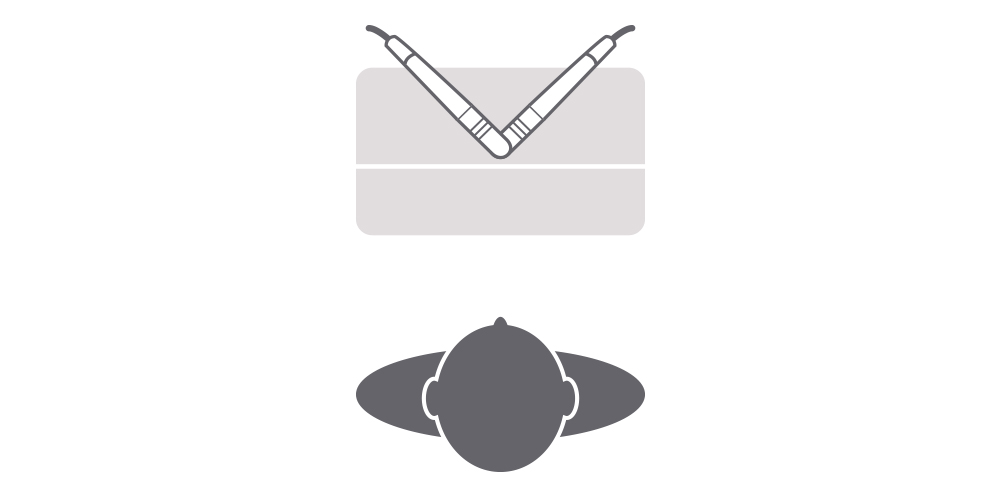Acoustic Phase Interference - Multiple Microphones | Acoustic Phase Interference - Single Microphone Placement
Acoustic Phase Interference
Multiple Microphones
Acoustic phase interference occurs when the same sound arrives at two or more adjacent microphones at different times. This happens, for example, when two microphones are placed on a lectern as in Fig. 16. Because they are spaced apart, sound from the subject will almost certainly arrive at the two microphones at different times. The curves in Fig. 17 show the effects of the destructive wave interferences this causes when the microphone outputs are mixed together. These response degradations can result in not only poor audio quality, but often feedback problems as well.


An obvious solution to this lectern-mic problem would be to use only one microphone. This not only improves the sound quality, but cuts the lectern microphone budget by approximately 50%! (Sometimes a second microphone may be desired as part of a backup or “redundancy” system, such as for press conferences. The two microphones should then be located directly in front of the subject, as close together as practical, and only one should be on or “open” at a time.)
Fig. 18 shows another approach to podium miking with two microphones. Here the two mics are placed with their capsules as close together as possible, and angled in a “crossfire.” This provides a wider overall acceptance angle, allows stereo miking with excellent mono compatibility, and largely avoids the phase interference problem.


Whenever two spaced microphones must be used, the “3:1 Ratio Rule” is a good guide for placement. Fig. 19 illustrates this rule of thumb. In the illustration, Microphone 1 is one foot from the sound source. The next closest microphone in the system, Microphone 2, should be located three feet or more from Microphone 1. If the distance between the sound source and Microphone 1 changes to two feet, then the minimum distance between the two microphones should be at least six feet, maintaining the 3:1 ratio.
Single Microphone Placement
Acoustic phase interference may also occur when only a single microphone is in use. This happens when sound is reflected off a nearby surface and arrives at the microphone slightly after the direct sound. Adding the two signals together may give problems similar to those encountered in improper multi-microphone setups. (The phase interference will be most noticeable when the reflected sound arrives at a sound pressure level that is within 9 dB of the direct sound.)
There are several ways to eliminate this problem. First, try putting the microphone closer to the sound source. Second, move the microphone farther from the reflective surface. Third, use a microphone specially configured to be placed extremely close to the reflective plane (Fig. 20). When using a low profile directional Audio-Technica boundary or “plate” microphone, for example, the microphone capsule is so close to the surface that the direct sound and the reflected sound arrive simultaneously and add together rather than cancel. This technique can prove very helpful on the apron of a stage, on a table or desk for conference use, or on the altar of a church.
